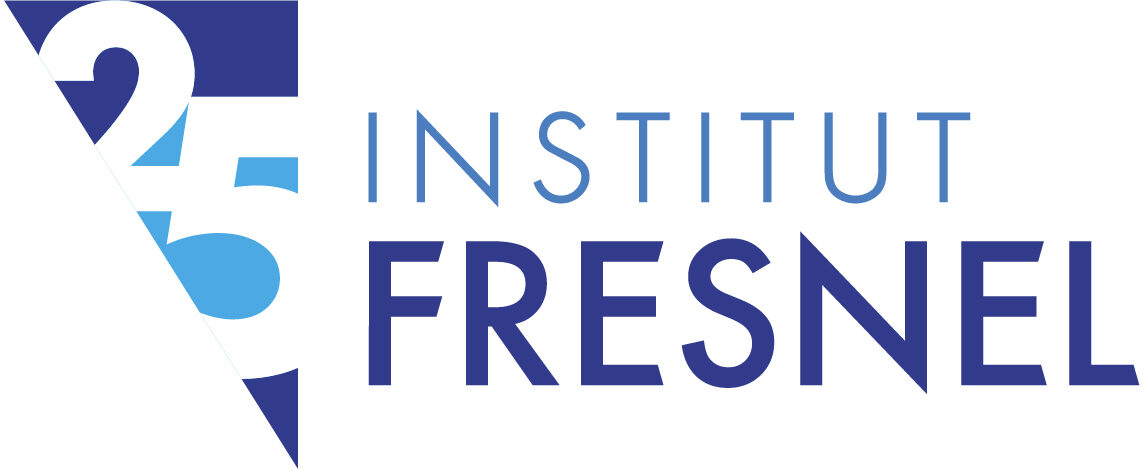Thermoplasmonics : using gold nanoparticles as nanosources of heat
Principal investigator : Guillaume Baffou
Keywords : nanoplasmonics, gold nanoparticles, thermal effects, optical and thermal imaging
Our research activities stand at the frontiers between nanooptics and thermodynamics. We investigate thermal-induced processes at the nano and micro scales using photothermally excited gold nanoparticles [13].
I – Experimentally
Our major contribution to this field of research (named thermoplasmonics) was to develop a unique temperature microscopy technique capable of mapping the temperature and the heat source density throughout plasmonic structures under illumination [8]. It also quantitatively measures the absorption cross section of nanoparticles, no matter their size, nature and morphology [12], and enables a three dimensional temperature mapping [14]. This label-free optical technique enables quantitative measurements with a diffraction-limited spatial resolution ( 500 nm) and at around one image per second (1 Hz).
Just because any area of science features thermal-induced processes (thermodynamics, chemical synthesis, fluid dynamics, phase transitions, cell biology, etc), the possible systems of interest that our technique can address is countless, with only one limitation : the imagination.
So far, thanks to this microscopy technique, we have been able to address problems in physics, chemistry and cell biology.
1- Physics
- We investigated the physics of heat generation of complex plasmonic systems, such as metal nanowires (collaboration with David McCloskey, CRANN, Dublin) [21] and plasmonic dimers [4].
- We have developed a procedure to create any temperature profile at the microscale (uniform, linear gradient, parabolic, asymmetric, etc). The method is based on the reverse calculation of specific and non-uniform gold nanoparticles distributions that can be designed by e-beam lithography [18].
- We detailed the physics of bubble dynamics created under cw illumination around single plasmonic nanoparticles. We explained the unexpected long life time of these bubbles, and we explained why bubble formation in plasmonics occurs around 200°C (not at 100°C), even under cw illumination [16].
- We published a tutorial on the thermoplasmonics of nanoholes [41].
2- Chemistry
- Following the possibility to achieve liquid water at 200°C under ambient conditions, we developed a new approach of hydrothermal chemistry that does not require the use of a pressure chamber (autoclave) [26].
- We published a review article on Nanoplasmonics for Chemistry [10].
3- Cell biology
- In collaboration with Romain Quidant (ICFO, Barcelona), we developed a technique to map the temperature in living cells in culture. This technique is based on fluorescence polarization anisotropy measurements and on the use of Green Fluorescent Proteins [10].
- Via a collaboration with Julien Polleux (Martinsried, Germany), we investigated the living cell migration controlled by plasmonic heating [11].
- We published a critique of the state of the art concerning temperature mapping in living cells, questioning the validity of recent experiments [20,22].
- We study problems in thermal biology at the level of single cells generated by heating of gold nanoparticles, such as the heat-shock response of single living cells [30].
II – Theoretically
- We studied the heat generation of complex plasmonic systems [2,3].
- We studied the physics of nanoparticle heating under pulsed illumination [6] and under modulated (time-harmonic) illumination [19].
- We developed new theoretical frameworks based on a Green’s function formalism (DDA) to compute the temperature distribution throughout plasmonic systems [5], and to compute the temperature evolution under femtosecond pulsed illumination [6].
- We studied the fluid convection generated around single gold nanoparticles on a substrate [7].
- We studied in detail the variations of the fluence threshold required for bubble formation around gold nanoparticles under nanosecond to femtosecond pulsed illumination [25].
- We detailed the physics of thermal collective effects in thermoplasmonics [15].
- We introduced two new figures of merit in plasmonics, named the Faraday and Joule numbers, aimed to quantify the ability of materials to achieve efficient near-field enhancement and heat generation in nanoplasmonics[24].
- We tested the interest of new materials in plasmonics, namely TiN and ZrN, as efficient near-field enhancers and nanosources of heat [26].
- We introduced the concept of isosbestic nanoparticles in plasmonics, which characterizes nanoparticles whose photothermal properties are independent on the polarization, while the near-field enhancement is [27].
| Experimental techniques | Numerical techniques |
| Confocal microscopy Fluorescence anisotropy imaging Quantitative phase imaging Temperature microscopy Single nanoparticle spectroscopy Scanning electronic microscopy Focused ion beam lithography Living cell culture |
Discrete dipole approximation (DDA) Green dyadic tensor techniques (GDT) Boundary element method (BEM) |

